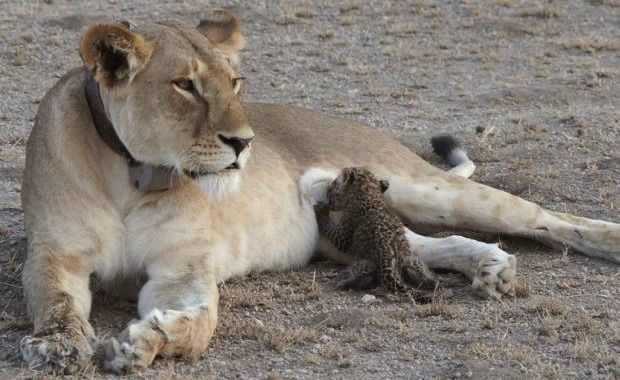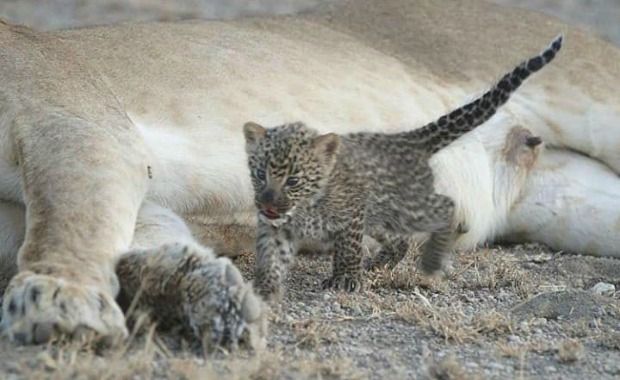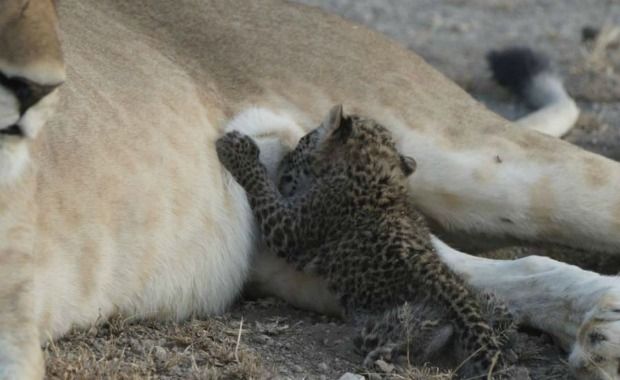Advertisement
First Wild Interspecies Photos Captured of Lioness Nursing Leopard Cub
| By Robin Milling
Advertisement - Continue reading below

It is a rare sight to see animals in the wild nursing their young. Seeing a lioness nursing a leopard cub has never been seen before — until now.
These photos were taken on July 11 by a guest staying at Ndutu Lodge. It is located in the Ngorongoro Conservation Area in the southern Serengeti.
The photographer got up close and personal snapping away at a 5-year-old lioness — known locally as Nosikitok . She was suckling a leopard cub estimated to be just 3 weeks old.
The photos were turned over to Panthera — a Big Cat conservation organization — which left wildlife experts astounded by what they saw. Nursing another species’ young has been seen before — as in this Sharpei in southern Russia letting tiger cubs suckle on her — when their mother could no longer produce milk.

Panthera President and Chief Conservation Officer Dr. Luke Hunter claimed interspecies suckling in the wild is highly unusual.
“This is a truly unique case,” Dr Hunter wrote. “I know of no other example of inter-species adoption or nursing like this among big cats in the wild. This lioness is known to have recently given birth to her own cubs, which is a critical factor. She is physiologically primed to take care of baby cats, and the little leopard fits the bill — it is almost exactly the age of her own cubs and physically very similar to them. She would not be nursing the cub if she wasn’t already awash with a ferocious maternal drive (which is typical of lionesses). Even so, there has never been another case like it, and why it has occurred now is mystifying. It is quite possible she has lost her own cubs, and found the leopard cub in her bereaved state when she would be particularly vulnerable.”

Nosikitok is not completely wild because she is currently collared and monitored by KopeLion, a Tanzanian conservation NGO supported by Panthera. KopeLion, founded in 2011, strives to foster human-lion coexistence in Ngorongoro for the benefit of both people and lions.
She belongs to the Masek pride, which KopeLion’s team saved from the threat of lion hunts in the region.
The leopard cub’s survival is in the balance as the remaining pride members will most likely reject it.
“Lions have very rich, complicated social relationships in which they recognize individuals — by sight and by roars —and so they are very well equipped to distinguish their cubs from others,” Dr. Hunter wrote. “If the rest of the pride finds the cub, it is likely it would be killed.”

If the cub thrives to independence after nursing, it would instinctively revert to behaving like a leopard.
“Even its early exposure to lion society would not override the millions of years of evolution that has equipped the leopard to be a supreme solitary hunter,” Dr. Hunter wrote. “I am sure it would go its own way.”
Advertisement - Continue reading below
Share
On Facebook
